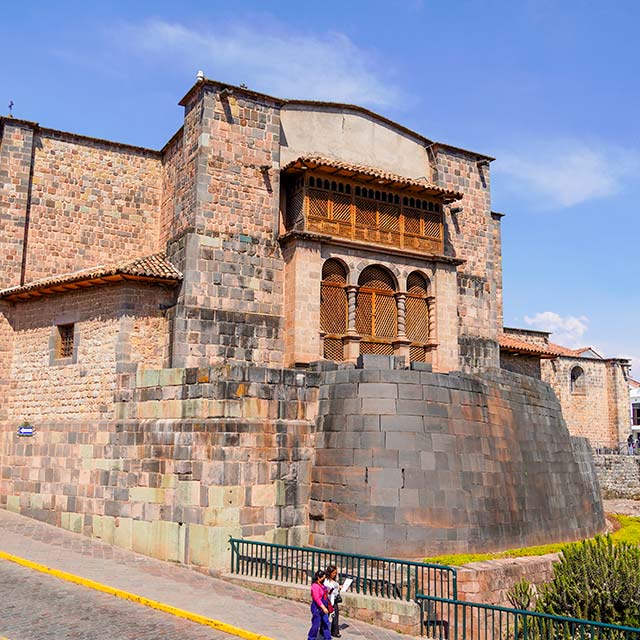Huchuy Qosqo (Qaqyaqawana)
Huchuy Qosqo, Peru, is known by the Quechua name Cusco, a small appellation acquired in the early 20th century, primarily due to its architectural resemblance to the city of Cusco.
In the Inca stage, it was known as Qaqyaqawana, a Quechua word meaning “from where the rays are observed,” which was executed along the storms. On August 19, 2003, it was proclaimed a Cultural Heritage Site of the country.

Huchuy Qosqo Location
This archaeological area is situated on a small plain at an altitude of 3,670 m.s.n.m. in the upper third of the mountain, in the municipality of Lamay, Calca Province, 50 km north of Cusco.
Its location is privileged; like Machu Picchu, its constructions stretch over Urubamba or the Yucay Valley. From where you can appreciate the other side of the Sacred Valley of the Incas and the endless snow caves, it’s a pure beauty, such as the Pitusiray snow cave, and beyond the city of Calca. The average temperature ranges from 11 °C to 17 °C.

History of Huchuy Qosqo
In his second chronicle, “Lord of the Incas” by Pedro de Cieza de León, he says that Wiracocha, the eighth Inca ruler, built the palaces of Huchuy Qosqo. Who decided to leave Cusco to seek refuge in the area of the Chanca invasion when his son Tupac Inca Yupanqui (Pachacútec) ruled the Inca resistance.
The Spanish chronicler Juan de Betanzos asserted that ten years after leaving power to Pachacútec or Inca Yupanqui, Wiracocha spent his last days in the Valley of Qaqyaqawana, dying at the age of eighty.

What was it about Huchuy Qosqo?
Its constructions and remains found in the area are believed to have been an administrative and military center around Pisaq, with numerous buildings.
In this area, it is possible to observe Inca constructions with well-constructed stone structures and grain deposits, known as Qolcas, located below the main enclosure of Huchuy Qosqo. This storage system is suitable for food storage and preservation, as this area is a significant agricultural center for maize production.

Construction of Huchuy Qosqo
Wiracocha and his descendants required a large number of workers for the construction. Therefore, the citizens of the Inca Empire were obligated under the mit’a system to contribute to the construction work of Huchuy Qosqo, alongside other specialists and artisans. Royal lands also serve as large field palaces and, at times, as fortifications to defend against rivals.
In Huchuy Qosqo, one of the most beautiful architectural works of the Inca Empire is displayed, featuring several architectural structures constructed with great ingenuity and wisdom, made from lime, adobe, and clay. The walls, with a slight interior slope, withstand telluric movement, the ravages of time, and the inevitable passage of time; they are a testament to the high technology and knowledge that went into their construction.
The construction of the enclosures has a slight internal trend, which guarantees better behavior during earthquakes. As can be observed, the «windows» are trapezoidal, slightly wider at the top and broader at the bottom; the opening is closed by a stone lintel, whose length opens between 4 and 5 rows of stones.

Buildings in Huchuy Qosqo
One of the most outstanding characteristics of Huchuy Qosqo is its location on a slope that mimics the natural contours of the mountain, resulting in an aesthetically pleasing appearance. Among its buildings, you will find:
A “Kallanka is of great importance to house the Inca officials; it is at least 40 to 50 feet long. All three are famous buildings, one with three floors, two floors of carved stone, and a high adobe base, while the other preserves an adobe-based structure.
The third building was originally a rectangular structure made of large adobe bricks, likely intended as a place for imperial women to learn their duties and responsibilities. It also featured large terraces and cliffs, a vast square, and a large Inca gate that served perfectly as a gate to control the passage into the city.
The water supply at the site is an irrigation canal built by the Incas, lined with perfectly fitted rocks to prevent water leaks, spanning approximately 800 meters, and several small irrigation reservoirs.
When the Spanish arrived, they used the site as a farm and demolished other Inca structures to build the most significant reservoir we see today.

How to get to Huchuy Qosqo?
To get to the Huchuy Qosqo Trek Review archaeological complex, it is necessary to hike through three different paths:
Tambomachay – Huchuy Qosqo
The first is a 2-day, 1-night trek through ancient Inca trails, crossing mountain trails and walking near beautiful lagoons with views of the snow-capped mountains of the Andes; This tour begins at 3,800 meters above sea level in Tambomachay, the highest point is at 4,300 meters above sea level and ends at 2,800 meters above sea level.

Chinchero – Huchuy Qosqo
The second route passes through Chinchero, starting in Taucca, a town located near the beautiful Piuray Lake. The walk takes an average of 3 hours, during which you can see the lagoons shimmer, with ducks, llamas, and alpacas grazing that look very impressive, until you reach the Andes.
Lamay – Huchuy Qosqo
Another route on foot is to go up from the town of Lamay, which takes about 2 hours to walk through a narrow and steep path. It is impossible not to experience the absolute beauty of the architecture and to think of the landscape of the Sacred Valley; it is strange that we still cannot explain how the Incas developed such detailed architectural techniques.










No comment yet, add your voice below!